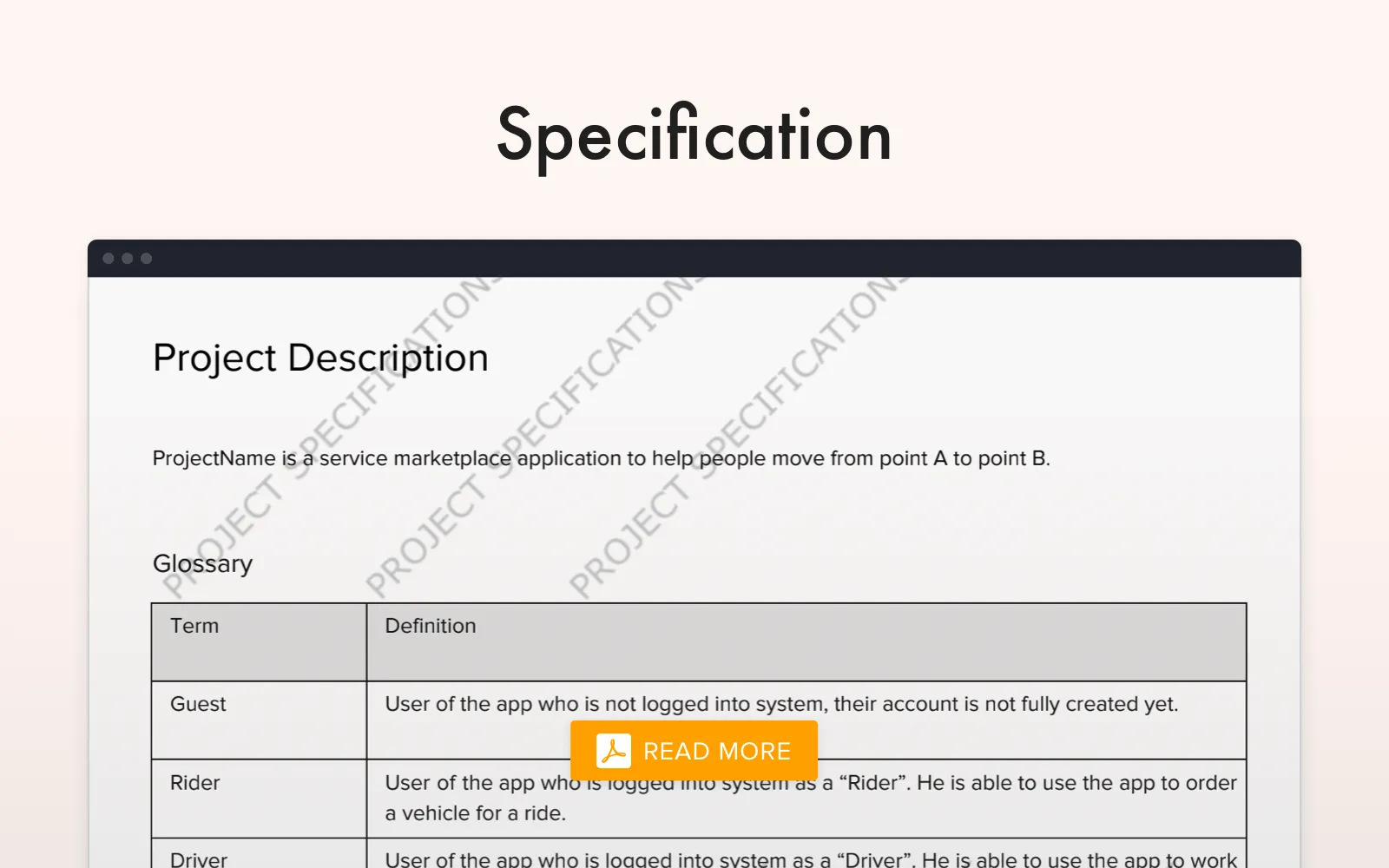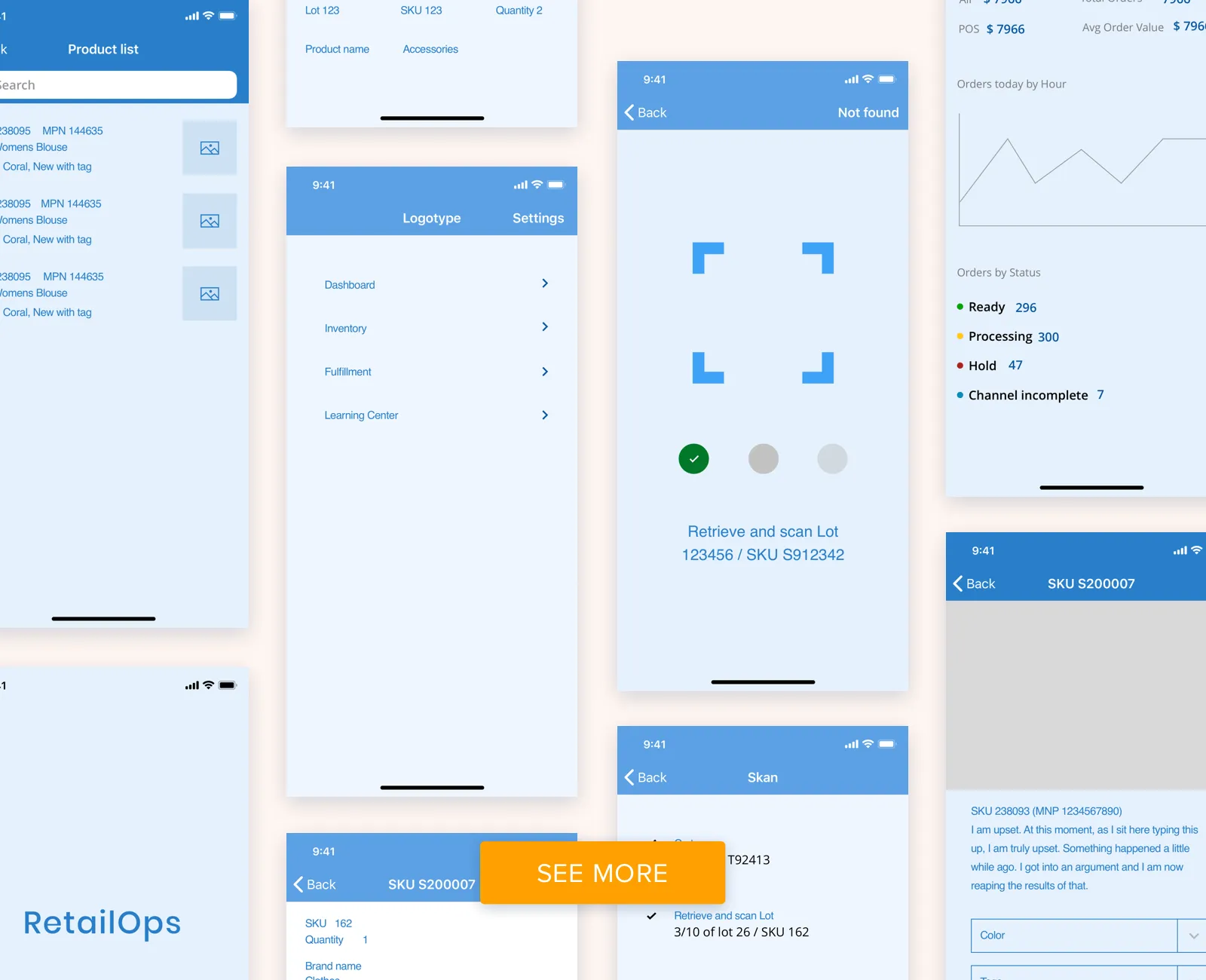Software Development Life Cycle Process: Stages and Common Challenges Explained
Updated 06 Jul 2023
9 Min
2525 Views
Project development can be a struggle if you aren’t familiar with the software development life cycle. SDLC stands for a methodology with a straightforward process for developing complex software. It covers a detailed explanation of each stage of the software development life cycle.
In this guide, you find the explanation of SDLC phases and common challenges to avoid.
What Is the Software Development Life Cycle?
Software development life cycle (SDLC) is a framework that a team should follow for cost-effective and consistent product development. SDLC is perfect for both large and small projects as it allows figuring out the requirements and making a plan to meet them.
There are seven primary software development life cycle phases (you can find an explanation of each stage later in the post):
- Collecting requirements
- Analysis
- Product design
- Development
- Testing
- Deployment
- Maintenance
SDLC is a base for all well-known project development methodologies — Kanban, Waterfall, Scrum, and Agile. Of course, these methods have several differences.
Waterfall
This software development methodology flows steadily downwards through the stages — conception, initiation, analysis, design, construction, testing, production, and maintenance. This method is perfect for developing lightweight projects with clear and stable requirements.
Kanban
The team is only focused on the work which is currently in progress. Once the team has completed one task, it picks up another from the top of the backlog. Again, the product owner (client or their representatives) can easily reprioritize tasks on the backlog without distracting the team.
Scrum
Scrum is perfect for complex projects requiring more than 300 hours for development. The workflow is organized in a way to implement top-priority tasks (product backlog) first.
Agile
Agile software development life cycle is step-by-step product creation approach. It focuses on stages like planning, design, development, testing, and launch. This methodology consists of a few short cycles (2-3 weeks each). A customer can see the result of each cycle and request changes.
Interested in software development methodologies? Read our guide comparing Waterfall, Kanban, Scrum, and other models.
| Criterion | Waterfall | Kanban | Scrum | Agile |
Project size | Small projects | Any project size | Large projects | Any project size |
100 hours | 300+ hours | |||
Requirements | Clear | Unclear | Unclear | Unclear |
Cost-efficiency | Yes | Yes | Yes | Yes |
When to use | Clear requirements and purpose | Ability to change requirements | Fast changes and task prioritization | Clear results after each development stage |
Why Software Development Life Cycle Is Important
The software development life cycle process simplifies bespoke software development offering organized steps to follow. As a result, the project becomes easy-to-manage and brings visible results.
Additionally, SDLC provides an opportunity to plan the development, figure out the costs and minimize risks.
Phases of Software Development
Software development life cycle phases can differ depending on a company and a chosen methodology. Most software development companies have a pretty similar workflow. Let’s look at their workflow.
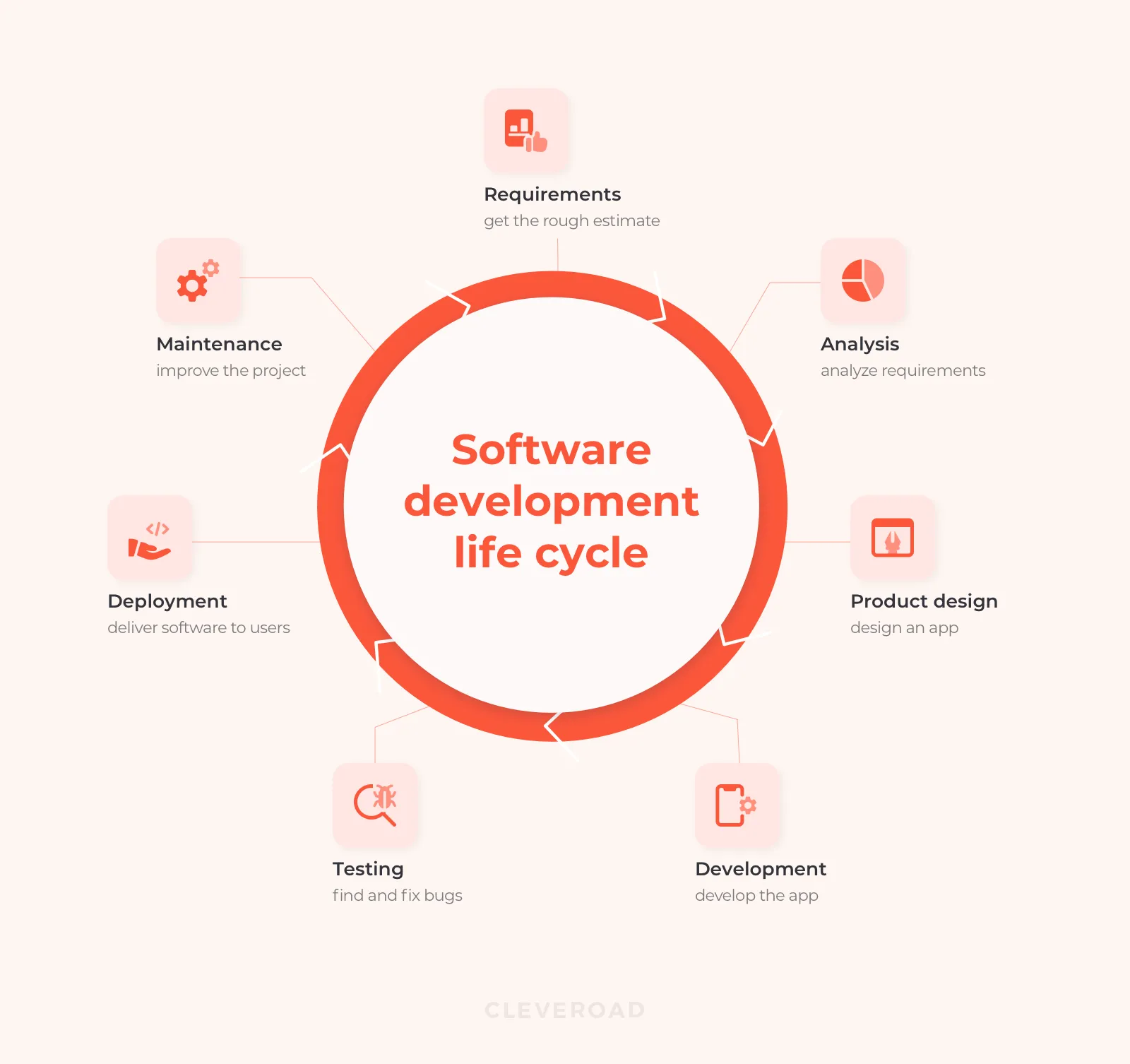
Software development life cycle phases
Phase #1. Collecting Requirements
Goals:
- Define project requirements
- Clear up the scope of work
- Get the rough estimate
During this stage, you need to discuss the project requirements with a chosen service provider. If you already have a working project and want to improve it, you can ask your users for feedback and their expectations from the upgrade.
After collecting the requirements, a company creates a rough estimate. It’s a document with minimum and maximum time and cost to develop your project.
If you agree with the timeframes and price, you sign the contract and move on to the requirements analysis.
We’ve already explained our approach to the software development process step-by-step – from Sprint Zero to a product release.
Phase #2. Analysis
Goals:
- Analyze project requirements to figure out the risks
- Minimize risks
- Figure out the development time and cost
- Set deadlines
- Get the detailed estimate
During this phase of the software development cycle, you work with Business Analysts to determine all the details. Modern applications tend to be complex and it’s not enough just to ask to implement registration. This feature can be built in hundreds of ways (Google, Twitter, Facebook, Linkedin, email, phone, or even providing access to certain functionality without registration). Business Analysts will help you to clarify features, business goals, target audience, and monetization strategy.
Based on this data, the team creates a specification. This document contains user stories with linked wireframes. It also covers tech aspects and describes features in detail. The entire development team uses the specification to implement your requirements and meet expectations.
While Business Analysts work on the specification, UI/UX designers creates wireframes. Designers arrange primary elements like buttons and images on each screen. We also create a linked prototype to show the app’s logic.
When the specification is ready, the quality assurance (QA) team checks it and wireframes. Next, developers (web, iOS, Android – depending on the platform), UI/UX designers, and Project Managers start working on a detailed project estimate.
Note: It’s common to estimate the part of the project to start the development faster.
Phase #3. Design
Goals:
- Create and pick the visual concept
- Create the design app screens
After approving the specification and wireframes, the design stage of software development starts. Designers work on visual concepts of the project for the necessary platforms. Visual concept stands for different designs of one or two screens. Designers pick appropriate colors, fonts, and other graphic elements.
The UI/UX design process has five significant steps. We’ve already described our approach to design workflow.
In the case of mobile development, we make two design concepts for you to choose from. For web development, we most often create a home page.
The client picks one of the concepts, and the design team applies the chosen style to the rest of the screens. The design phase usually takes several development sprints.
After creating the design, designers pass it over to developers. At Cleveroad, we use Zeplin as a primary tool for handing over. Now, software engineers can start the development process.
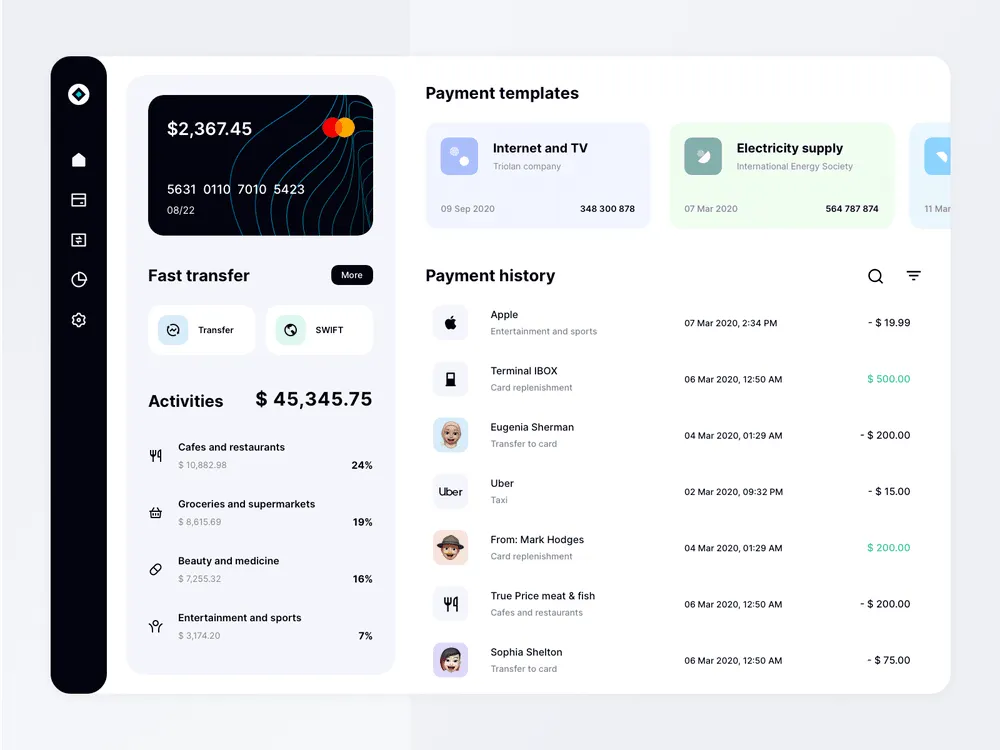
Design example (Source: Dribbble)
Phase #4. Development
Goals:
- Develop an app architecture
- Build the software that meets the requirements
It tends to be the longest stage of the software development life cycle. During this stage, the development team implements the required features. Depending on the project, you can cooperate with various developers like iOS, Android, or web developers (front-end and back-end).
To make the development more structured, it’s common to divide the development into sprints. In Agile development methodology, sprint is a period when a team has to complete a set amount of work.
How does sprint work?
Each sprint lasts two weeks (ten working days) and starts with a planning meeting. As a product owner, you discuss the scope of work that should be done during the sprint with the development team.
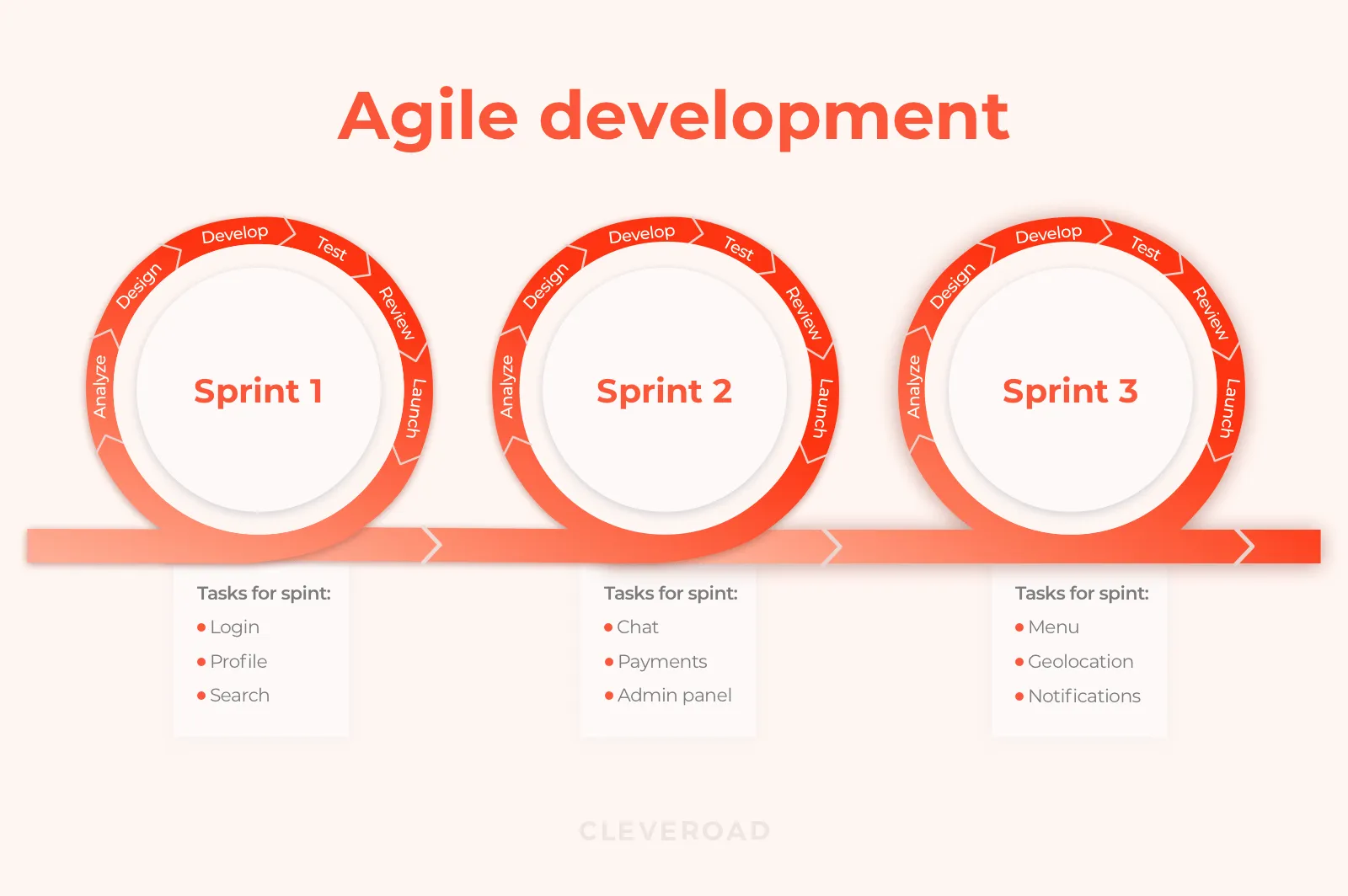
SDLC: Agile development
Phase #5. Testing
Goals:
- Make sure that software meets requirements
- Find and fix bugs
Software engineering life cycle has a testing stage to release a high-quality product.
The developers implement the required features, while the quality assurance engineers test the app to find bugs. QA engineers take part in the project till release. That’s because their role here is to check the functionality developed during each sprint.
Quality assurance engineers test both back end and front end, find bugs, and create reports for software developers to fix them. When the developer makes fixes, the QA engineer looks through the code once again to ensure that it works correctly.
There are various tests:
- Functional tests to ensure that features work according to the business logic and comply with project requirements.
- Negative tests to check the app’s stability and error handling capabilities (QA engineers input invalid data and analyze software behavior).
- Smoke tests to prove that the main business logic has been implemented correctly and works seamlessly, along with the main functionality.
- Regression tests to check how the software works under moderate load.
Discover what types of software testing we perform at Cleveroad and what steps follow during the testing phase of the software development process.
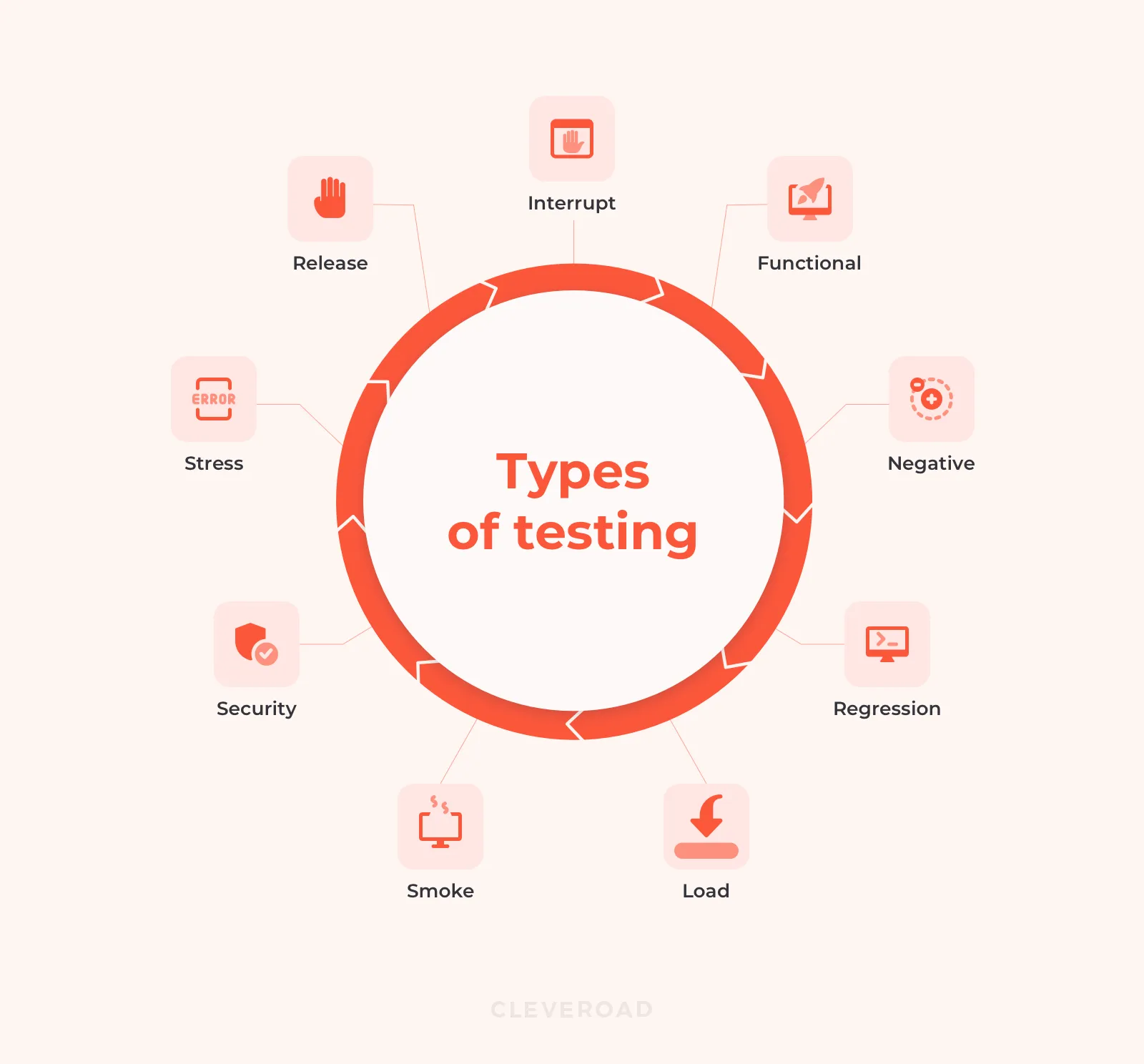
Types of testing at Cleveroad
Phase #6. Deployment
Goals:
- Publish the app
- Deliver software to users
During this stage, the development team works on the project release.
Software development companies usually help with the app release on AppStore or Google Play, but you can also release the app yourself or with your in-house development team. App stores check the app compliance with the guidelines to make sure it meets strict requirements. The approval tends to take 2 or 3 days.
As for web solutions, the development team moves it to the production server and checks if everything works correctly.
Phase #7. Maintenance
Goals:
- Support the product
- Improve the app or website
To offer a great user experience, you need to support and improve the app constantly. So, it’s better to continue cooperation with the development team.
Project maintenance stands for:
- Bug fixing
- Stability and performance improvements
- Code optimization
- Latest OS versions support
- Adding new features
- Supporting the latest versions of third-party services
Common Challenges to Avoid During Software Development Life Cycle
Not spending enough time on planning
Planning is essential for the software development life cycle. It allows clearing up and describing your business and tech requirements. Your product idea goes through accurate analysis and planning. It means that you get a detailed project estimate and minimize the risk of failed deadlines and overpayment.
Making changes all the time
SDLC has stages at which making changes can cost you stability (if the time is limited) and money (since you have to go back and go through stages as testing again). With many changes, the business logic can be ruined. Using SDLC, you can have a strict project plan. To integrate a new feature, you need to start the next sprint.
The Bottom Line
At Cleveroad, we follow the Agile software development methodology to develop advanced projects with all the necessary changes. As a result, we create advanced products meeting requirements and deadlines.
Would you like to see our projects? Look through our portfolio! Also, feel free to check our Dribbble and Behance accounts to study our designers’ works.
Ready to build a project?
Book a meeting with our specialist to get an individual tech consultation free of charge.
Software development life cycle (SDLC) is a framework that a team should follow for cost-effective and consistent product development. SDLC is perfect for both large and small projects as it allows figuring out the requirements and making a plan to meet them.
- Collecting requirements
- Analysis
- Product design
- Development
- Testing
- Deployment
- Maintenance
Collecting requirements
During this stage, you need to discuss the project requirements with a chosen service provider. If you already have a working project and want to improve it, you can ask your users for feedback and their expectations from the upgrade.
The software development life cycle process makes it easier to build software from the ground up offering organized steps to follow. As a result, the project becomes easy-to-manage and brings visible results.
Additionally, SDLC provides an opportunity to plan the development, figure out the costs and minimize risks.

Evgeniy Altynpara is a CTO and member of the Forbes Councils’ community of tech professionals. He is an expert in software development and technological entrepreneurship and has 10+years of experience in digital transformation consulting in Healthcare, FinTech, Supply Chain and Logistics
Give us your impressions about this article
Give us your impressions about this article
